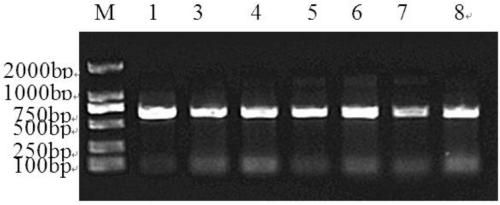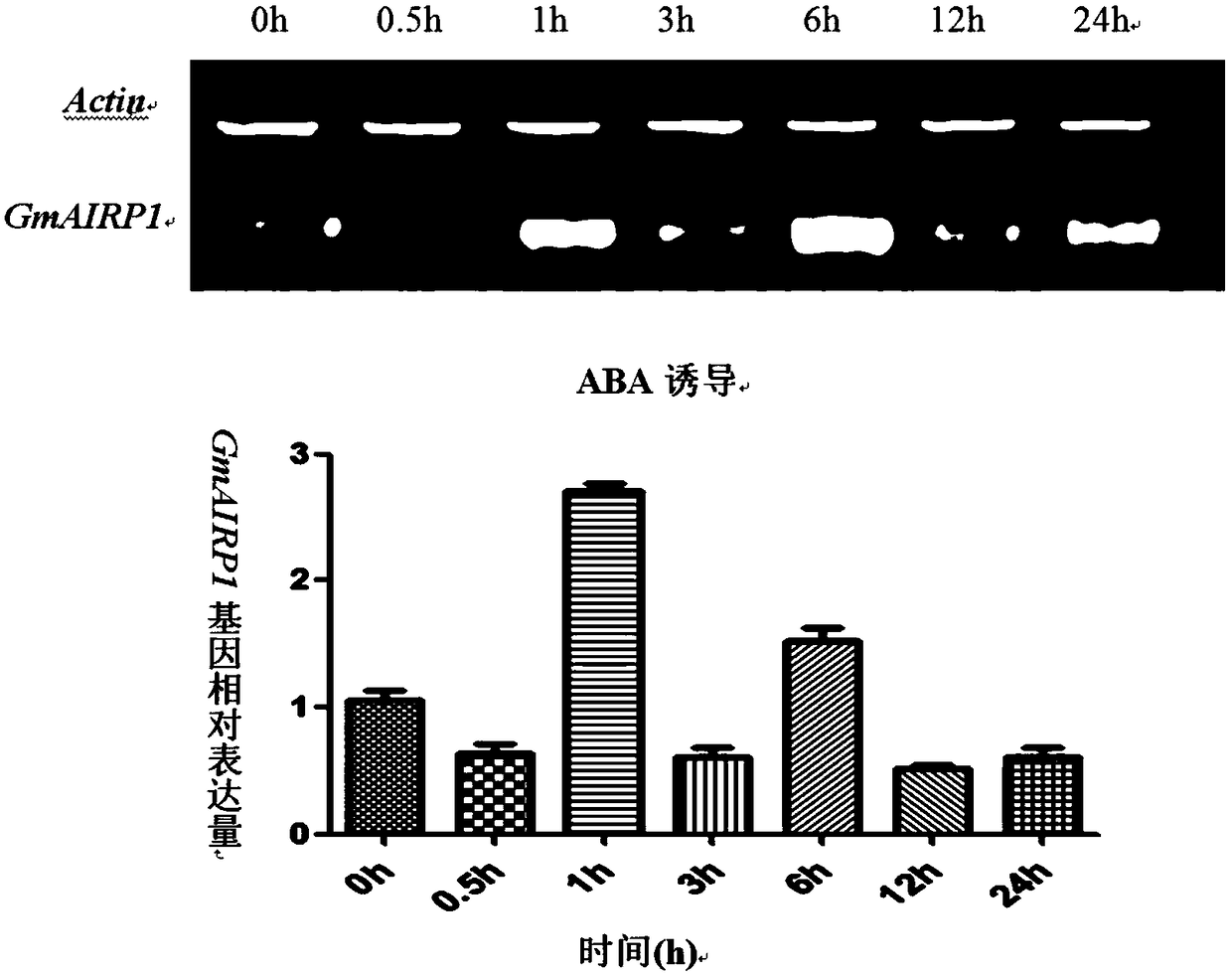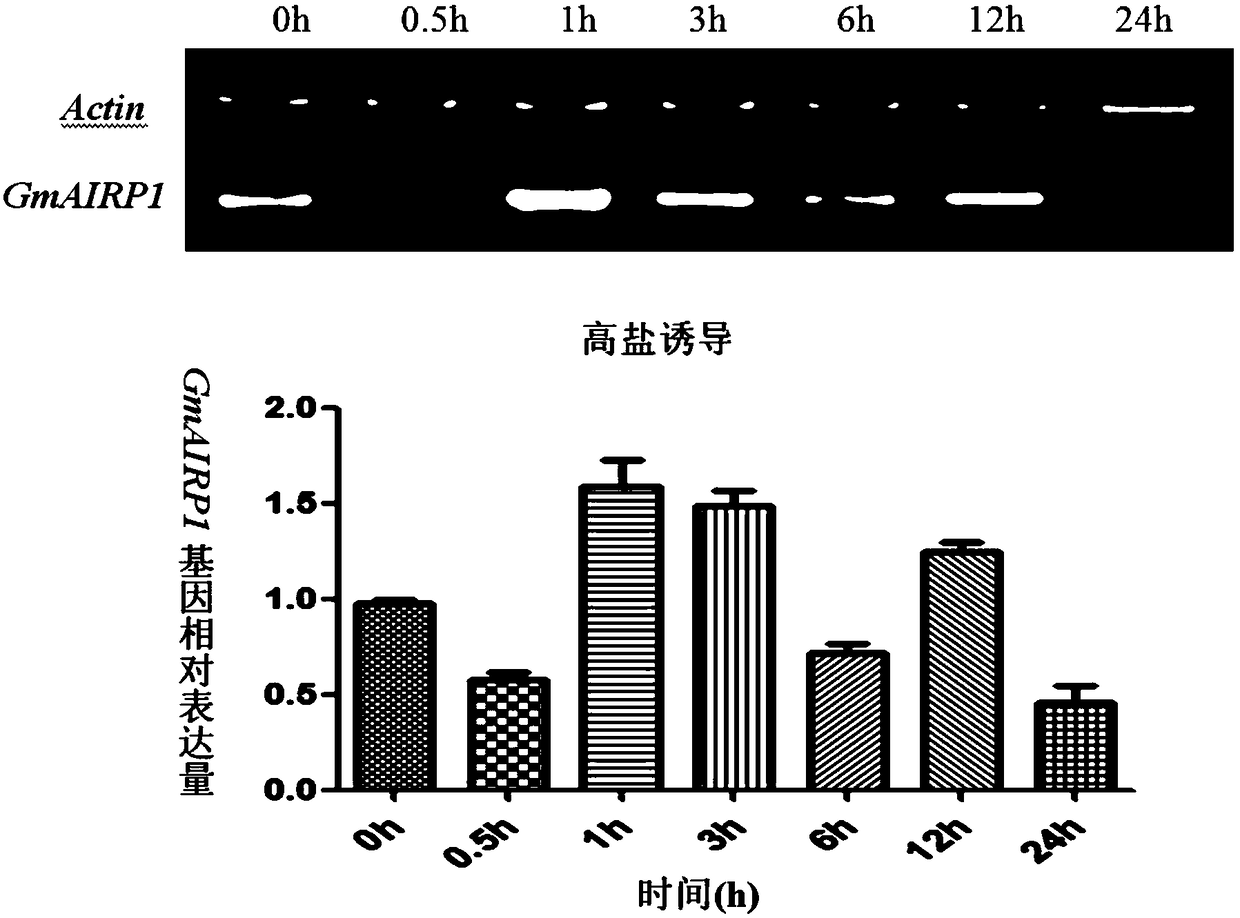Soybean protein gmairp1 and its coding gene and application
A protein and encoding technology, applied in the field of soybean protein GmAIRP1 and its encoding gene and application, can solve problems such as unsatisfactory, yield and quality decline, and restriction of soybean export
- Summary
- Abstract
- Description
- Claims
- Application Information
AI Technical Summary
Problems solved by technology
Method used
Image
Examples
Embodiment 1
[0049] Cloning and expression pattern of embodiment 1, GmAIRP1 gene
[0050] 1. Cloning of GmAIRP1 gene
[0051] Primers were designed using primer premier5.0, and two restriction endonuclease recognition sites, BamHI and SacI, were added to the 5′ ends of the primers respectively. The primer sequences were as follows:
[0052] GmAIRP1-P1:5′CG GGATCC ATGGGCGGTTGCTGTTGT 3′
[0053] BamHI
[0054] GmAIRP1-P2: 5′G GAGCTC TTATTCAATGGGAGGGTCG 3′
[0055] SacI
[0056] The total RNA of Hefeng 45 soybean was extracted, cDNA obtained by reverse transcription was used as a template, and PCR amplification was carried out with GmAIRP1-P1 and GmAIRP1-P2 to obtain PCR amplification products.
[0057] The electrophoresis results of the PCR amplification products were as follows: figure 1 As shown, M: DL2000 molecular weight standard; 1 ~ 8: PCR amplification product, the target band with a size of about 640bp was obtained.
[0058] The above PCR amplification product was connected w...
Embodiment 2
[0070] Example 2, Functional Identification of GmAIRP1 Gene
[0071] 1. Construction of recombinant vector
[0072] The 642bp PCR product obtained in Example 1 was digested with BamHI and SacI, and connected with the expression vector PBI121 that had undergone the same digestion to obtain a recombinant vector.
[0073] After sequencing, the recombinant vector is a vector obtained by replacing the DNA fragment between the BamHI and SacI restriction sites of the expression vector PBI121 with the GmAIRP1 gene shown in Sequence 1 in the sequence listing, named pBI121-GmAIRP1.
[0074] 2. Preparation of recombinant bacteria
[0075] The purpose plasmid pBI121-GmAIRP1 was introduced into Agrobacterium EHA105 by three-parent hybridization, as follows:
[0076] (1) Inoculate the recipient Agrobacterium EHA105 on YEP solid medium containing 100mg / L rifampicin, culture at 28°C, and when a single colony grows, pick a single colony and inoculate it in the liquid medium, shake at 28°C t...
PUM
 Login to View More
Login to View More Abstract
Description
Claims
Application Information
 Login to View More
Login to View More - R&D
- Intellectual Property
- Life Sciences
- Materials
- Tech Scout
- Unparalleled Data Quality
- Higher Quality Content
- 60% Fewer Hallucinations
Browse by: Latest US Patents, China's latest patents, Technical Efficacy Thesaurus, Application Domain, Technology Topic, Popular Technical Reports.
© 2025 PatSnap. All rights reserved.Legal|Privacy policy|Modern Slavery Act Transparency Statement|Sitemap|About US| Contact US: help@patsnap.com



